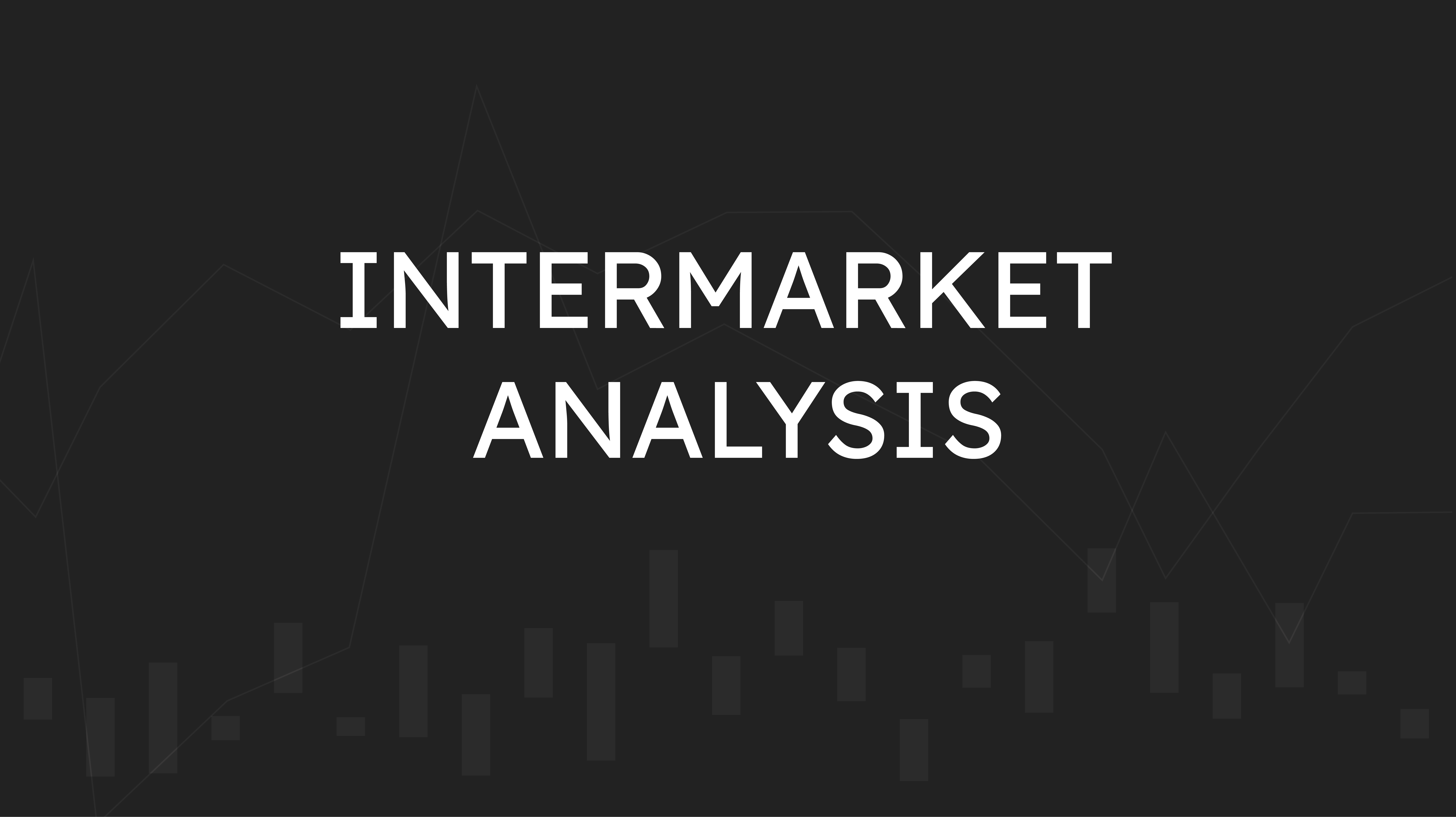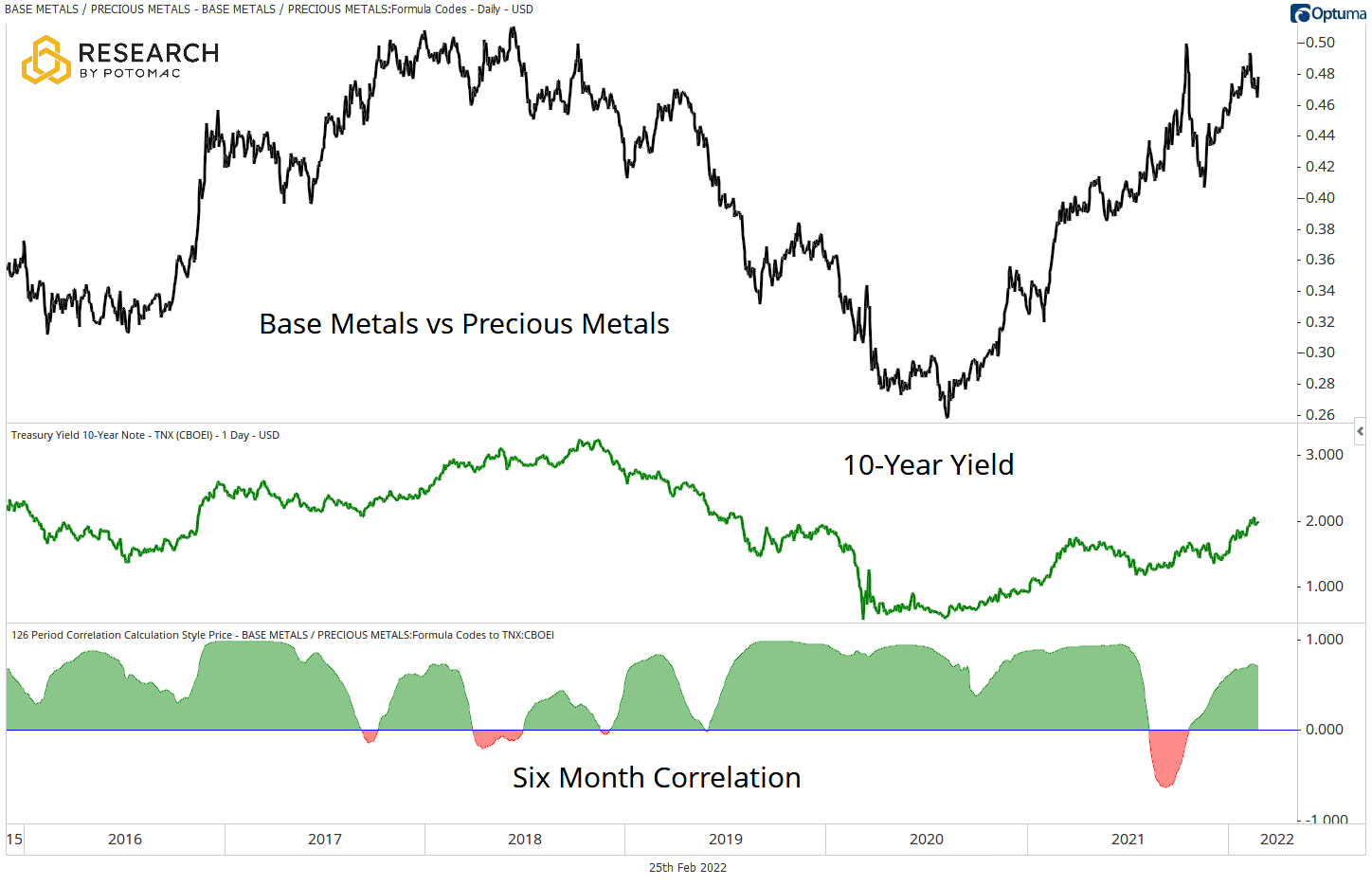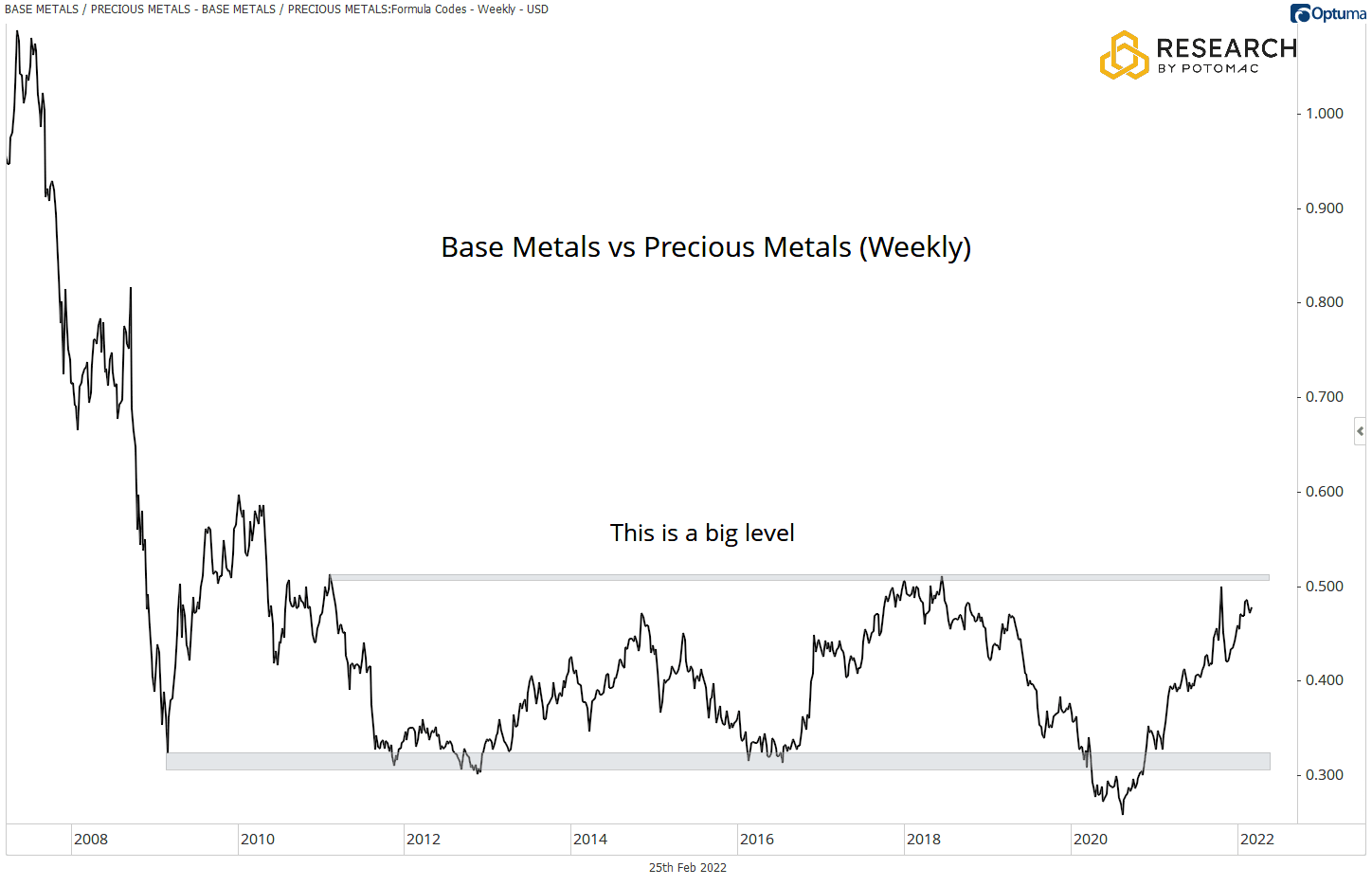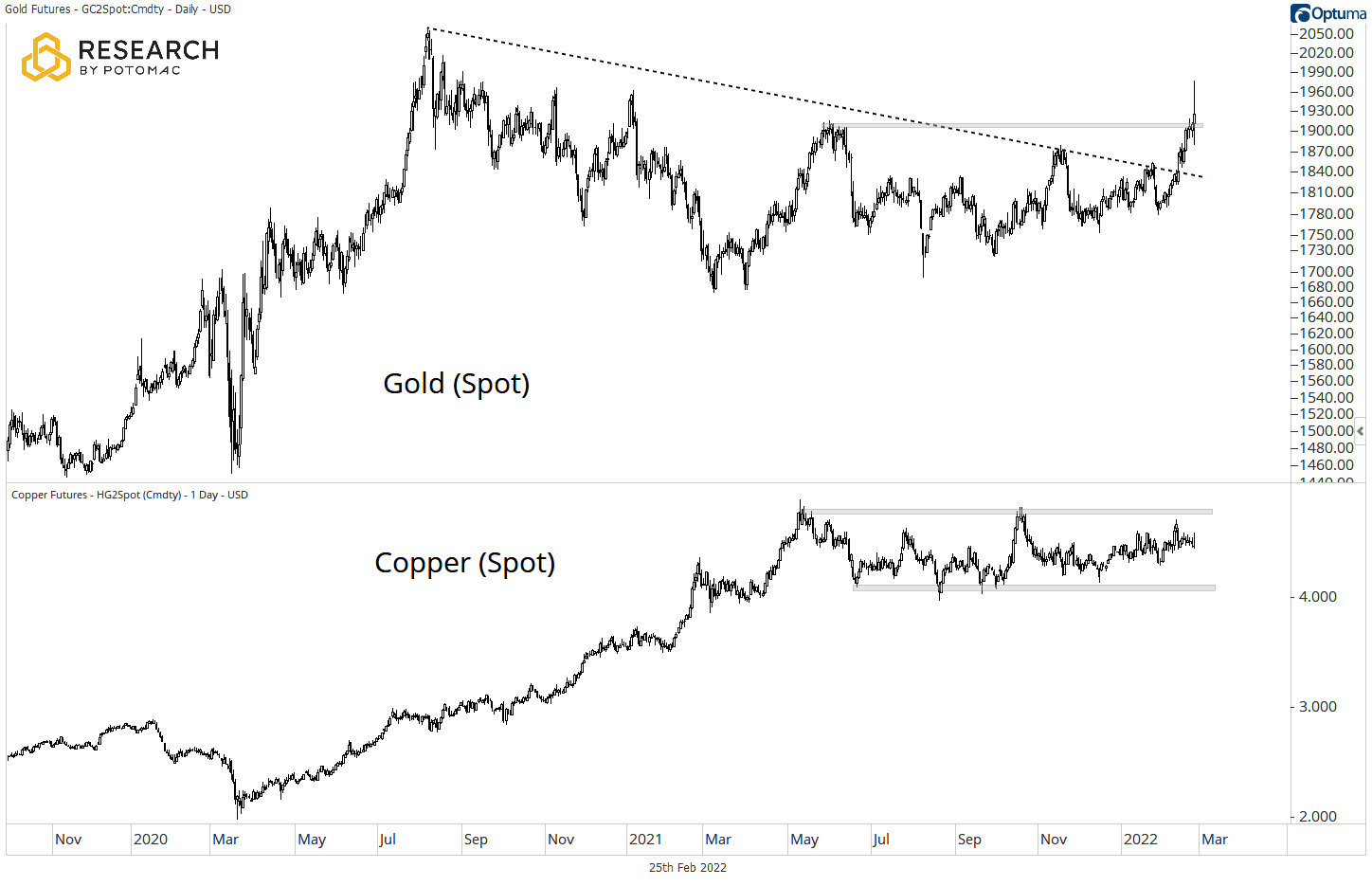
What if the Rates Risk Is to the Downside?
The consensus view is that the Federal Reserve will implement multiple rate hikes throughout 2022 to tame inflation. While we are not in the business of trying to handicap the Fed, we can look at Intermarket relationships to determine where the risks may be hidden. With Base Metals at a key resistance level relative to Precious Metals, we are paying close attention. Given historical correlations, failure to launch on the part of this ratio could set the stage for rates to move lower.
In last week’s note, we began to highlight the strength that we saw in precious metals. This week we look at the relationship between Precious Metals and Base Metals.
The ratio of Base Metals to Precious Metals has been in a strong uptrend since making a low in August 2020. The rally has taken the ratio back to the area of the 2018 highs setting up an interesting scenario as it relates to rates. While the ratio and the 10-Yield Move together, the rolling six-month correlation gives a sense of how strong this relationship has tended to be.

Zooming out, we revisit the weekly chart of Base Metals vs. Precious Metals to have a sense of just how important the current resistance level is. It serves as the top portion of a base that has been in place for more than a decade.

In the past, we have highlighted the relationship between Copper and Gold and how leadership on the part of Copper tends to act as a headwind for fixed income, leading to generally higher rates. This more granular look within the metals complex confirms the relationship that we highlight above.
Looking under the hood of the Copper/Gold Ratio, we can see that Gold, a Precious Metal, is in the process of breaking above resistance after breaching the declining trend line from the 2020 highs. At the same time, Copper continues to stagnate, trading in the consolidation that has been in place since May 2021.

Given the importance of what is playing out in the metals markets, it is interesting to highlight that the Two-Year Treasury Yield has begun to stall at a prior consolidation zone. The Two-Year is widely followed as a proxy for where the Federal Reserve could take interest rates. Notice that it began to tick higher in October 2021 and accelerated as investors begin to price in rate hikes beginning with the March FOMC meetings.
While we are not in the business of trying to handicap what the Federal Reserve will do with rates, we are in the business of identifying trends and relationships to uncover where the risks may lie. Our thoughts and more in the full report.
Disclosure: This information is prepared for general information only and should not be considered as individual investment advice nor as a solicitation to buy or offer to sell any securities. This material does not constitute any representation as to the suitability or appropriateness of any investment advisory program or security. Please visit our FULL DISCLOSURE page.
